
N,N-Dimethyltryptamine is a substituted tryptamine that occurs in many plants and animals, including humans, and which is both a derivative and a structural analog of tryptamine. DMT is used as a psychedelic drug and prepared by various cultures for ritual purposes as an entheogen.

Psychedelics are a subclass of hallucinogenic drugs whose primary effect is to trigger non-ordinary mental states and an apparent expansion of consciousness. Also referred to as classic hallucinogens or serotonergic hallucinogens, the term psychedelic is sometimes used more broadly to include various types of hallucinogens, such as those which are atypical or adjacent to psychedelia like salvia and MDMA, respectively.

Ralph Herman Abraham is an American mathematician. He has been a member of the faculty of the University of California, Santa Cruz since 1968.
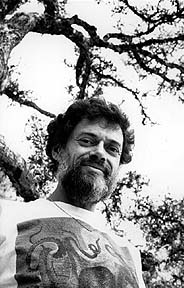
Terence Kemp McKenna was an American ethnobotanist and mystic who advocated the responsible use of naturally occurring psychedelic plants. He spoke and wrote about a variety of subjects, including psychedelic drugs, plant-based entheogens, shamanism, metaphysics, alchemy, language, philosophy, culture, technology, ethnomycology, environmentalism, and the theoretical origins of human consciousness. He was called the "Timothy Leary of the '90s", "one of the leading authorities on the ontological foundations of shamanism", and the "intellectual voice of rave culture".

Joseph James Rogan is an American UFC color commentator, podcaster, comedian, actor, and former television host. He hosts The Joe Rogan Experience, a podcast in which he discusses current events, comedy, politics, philosophy, science, martial arts, and hobbies with a variety of guests.

Alex Grey is an American visual artist, author, teacher, and Vajrayana practitioner known for creating spiritual and psychedelic artwork such as his 21-painting Sacred Mirrors series. He works in multiple forms including performance art, process art, installation art, sculpture, visionary art, and painting. He is also on the board of advisors for the Center for Cognitive Liberty and Ethics, and is the Chair of Wisdom University's Sacred Art Department. He and his wife Allyson Grey are the co-founders of The Chapel of Sacred Mirrors (CoSM), a non-profit organization in Wappingers Falls, New York.

5-MeO-DMT (5-methoxy-N,N-dimethyltryptamine) or O-methyl-bufotenin is a psychedelic of the tryptamine class. It is found in a wide variety of plant species, and also is secreted by the glands of at least one toad species, the Colorado River toad. Like its close relatives DMT and bufotenin (5-HO-DMT), it has been used as an entheogen in South America. Slang terms include Five-methoxy, the power, bufo, and toad venom.

Dennis Jon McKenna is an American ethnopharmacologist, research pharmacognosist, lecturer and author. He is the brother of well-known psychedelics proponent Terence McKenna and is a founding board member and the director of ethnopharmacology at the Heffter Research Institute, a non-profit organization concerned with the investigation of the potential therapeutic uses of psychedelic medicines.

Rick Strassman is an American clinical associate professor of psychiatry at the University of New Mexico School of Medicine. He has held a fellowship in clinical psychopharmacology research at the University of California San Diego and was Professor of Psychiatry for eleven years at the University of New Mexico. After 20 years of intermission, Strassman was the first person in the United States to undertake human research with psychedelic, hallucinogenic, or entheogenic substances with his research on N,N-dimethyltryptamine, also known as DMT. He is also the author of DMT: The Spirit Molecule, which summarizes his academic research into DMT and other experimental studies of it, and includes his own reflections and conclusions based on this research.

Erik Davis is an American writer, scholar, journalist and public speaker whose writings have ranged from rock criticism to cultural analysis to creative explorations of esoteric mysticism. He is perhaps best known for his book Techgnosis: Myth, Magic and Mysticism in the Age of Information, as well as his work on California counterculture, including Burning Man, the human potential movement, and the writings of Philip K. Dick.

O-Acetylpsilocin is a semi-synthetic psychoactive drug that has been suggested by David Nichols to be a potentially useful alternative to psilocybin for pharmacological studies, as they are both believed to be prodrugs of psilocin. However, some users report that O-acetylpsilocin's subjective effects differ from those of psilocybin and psilocin. Additionally, some users prefer 4-AcO-DMT to natural psilocybin mushrooms due to feeling fewer adverse side effects such as nausea and heavy body load, which are more frequently reported in experiences involving natural mushrooms. It is the acetylated form of the psilocybin mushroom alkaloid psilocin and is a lower homolog of 4-AcO-MET, 4-AcO-DET, 4-AcO-MiPT and 4-AcO-DiPT.

5-Bromo-DMT (5-bromo-N,N-dimethyltryptamine) is a psychedelic brominated indole alkaloid found in the sponges Smenospongia aurea and Smenospongia echina, as well as in Verongula rigida alongside 5,6-Dibromo-DMT and seven other alkaloids. It is the 5-bromo derivative of DMT, a psychedelic found in many plants and animals.
Stephen István Szára was a Hungarian-American chemist and psychiatrist who made major contributions in the field of pharmacology.
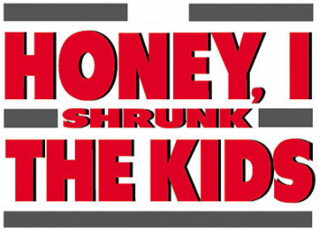
Honey, I Shrunk the Kids is an American media franchise consisting of a series of family-science fiction-comedy films and a television adaptation, among other works, based on a concept created by Stuart Gordon and Brian Yuzna, and an original story co-written by Gordon, Yuzna, and Ed Naha. Following the release of Honey, I Shrunk the Kids (1989), and its subsequent financial and critical success, two sequels and a television series followed; titled Honey, I Blew Up the Kid (1992), Honey, We Shrunk Ourselves (1997), and Honey, I Shrunk the Kids: The TV Show, respectively. Another sequel titled Shrunk entered development in 2019.
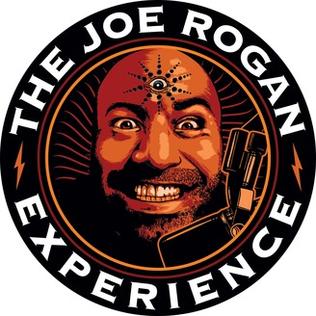
The Joe Rogan Experience is a podcast hosted by American comedian, presenter, and UFC color commentator Joe Rogan. It launched on December 24, 2009, on YouTube by Rogan and comedian Brian Redban, who was its sole co-host and producer until 2012 when Jamie Vernon, who would eventually take over production, was hired to co-produce. By 2015, it was one of the world's most popular podcasts, regularly receiving millions of views per episode, also including a wide array of guests, including business magnate Elon Musk, whistleblower Edward Snowden, Senator Bernie Sanders, and astrophysicist Neil deGrasse Tyson. From December 2020 to February 2024, the podcast was exclusively available on Spotify, with highlights uploaded onto the main Joe Rogan Experience YouTube channel. The podcast was originally recorded at Rogan's home in California, before moving to a private studio in Woodland Hills, Los Angeles. Production was relocated to Austin, Texas after the podcast was exclusively licensed on Spotify in 2020.
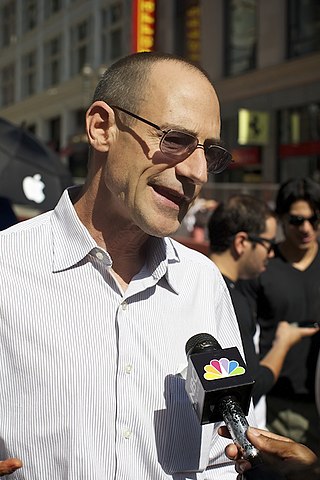
Andrew "Andy" C. Stone is an American computer programmer best known for his iOS app Twittelator, which to date has sold over a million units for the iPhone and the iPad. The founder, director, and principal programmer for Stone Design Corporation, Albuquerque, New Mexico. In his 25 plus year career as a programmer, he has published over 35 software titles for Hypercard, the NeXT workstation, Mac OS X, and for iOS iPhones and iPads. He retired from software development in 2015.
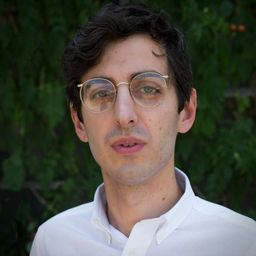
Hamilton Morris is an American journalist, documentarian, and scientific researcher. He is the creator and director of the television series Hamilton's Pharmacopeia, in which he investigates the chemistry, history, and cultural impact of various psychoactive drugs.
Philosophy of psychedelics is the philosophical investigation of the psychedelic experience. While psychedelic, entheogenic or hallucinogenic substances have been used by many traditional cultures throughout history mostly for religious purposes, recorded philosophical speculation and analysis of these substances, their phenomenological effects and the relevance of these altered states of consciousness to philosophical questions is a relatively late phenomenon in the history of philosophy. Traditional cultures who use psychedelic substances such as the Amazonian and Indigenous Mexican peoples hold that ingesting medicinal plants such as Ayahuasca and Peyote allows one to commune with the beings of the spirit world.
This is an overview of the legality of ayahuasca by country. DMT, one of the active ingredients in ayahuasca, is classified as a Schedule I drug under the United Nations 1971 Convention on Psychotropic Substances, meaning that international trade in DMT is supposed to be closely monitored; use of DMT is supposed to be restricted to scientific research and medical use. Natural materials containing DMT, including ayahuasca, are not regulated under the 1971 Psychotropic Convention. The majority of the world's nations classify DMT as a scheduled drug; however, few countries seem to have laws specifically addressing the possession or use of ayahuasca.

How to Change Your Mind: What the New Science of Psychedelics Teaches Us About Consciousness, Dying, Addiction, Depression, and Transcendence is a 2018 book by Michael Pollan. It became a No. 1 New York Times best-seller.

















